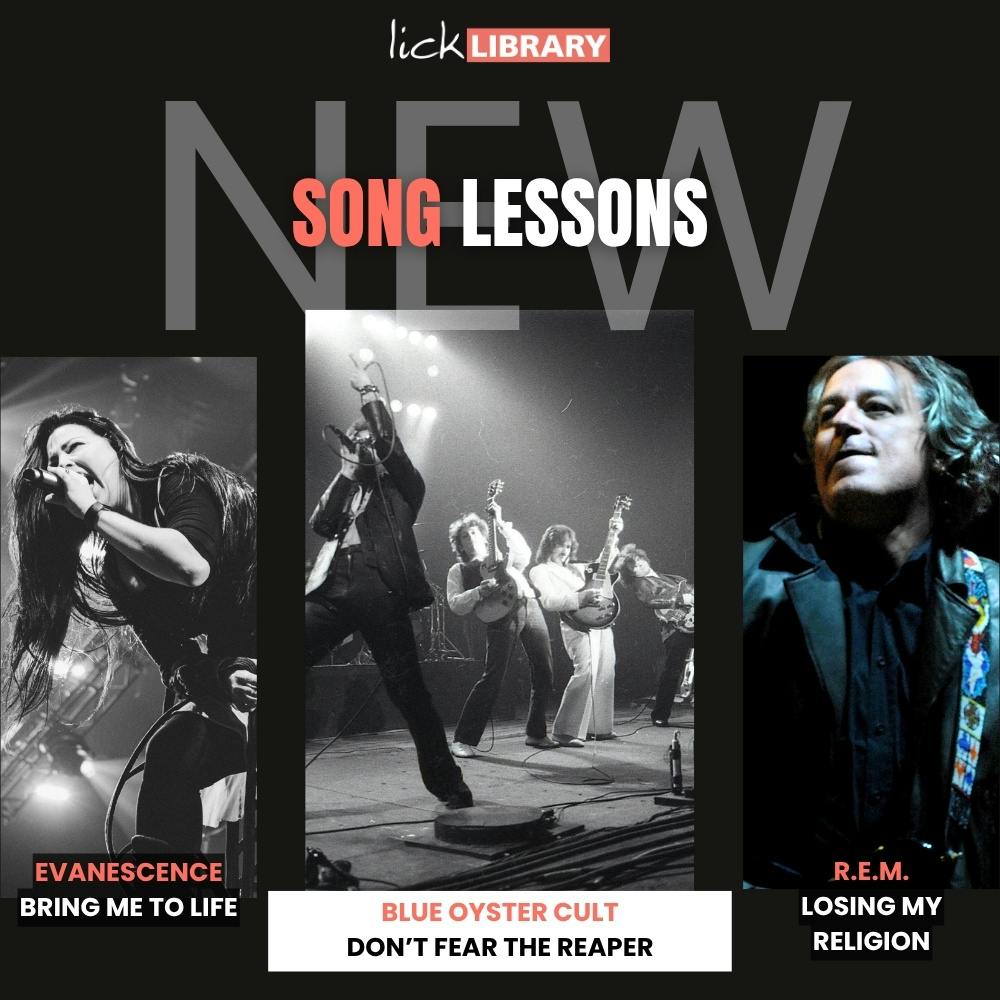ZZ Top – La Grange Riff
Dive into the gritty, blues-infused world of Texas rock with our ZZ Top – La Grange Riff guitar lesson at LickLibrary.com. This in-depth, note-for-note breakdown dissects one of the most iconic riffs in rock history, teaching guitarists how to emulate the raw tone and infectious groove that made La Grange a timeless classic.
With this guitar lesson, players will not only master the signature riff of La Grange, but also develop a deeper understanding of the techniques that shaped ZZ Top’s legendary sound. It’s a must-learn for fans of blues-rock and for any guitarist looking to enhance their rhythm and phrasing chops. Danny Gill breaks down this class riff in this exclusive Lick Library video tutorial.
About the Song and Guitarist
La Grange, released in 1973 on ZZ Top’s Tres Hombres album, features guitarist Billy Gibbons, whose style fuses blues authenticity with Texas grit. Gibbons is celebrated for his soulful tone, expressive phrasing, and economical playing—he doesn't waste a note. His guitar work on La Grange demonstrates his unique ability to blend traditional blues techniques with rock swagger, and his influence can be heard across generations of guitarists, from blues revivalists to hard rock players.
Gibbons’ approach, using subtle nuances and feel over speed, makes this riff an ideal study in musicality and tone. By learning this riff, students gain insight into his iconic style and the subtle touch that made ZZ Top’s sound instantly recognisable.
Lesson Breakdown: Techniques Explored
Slides
One of the most fundamental techniques in this lesson is the slide, which Gibbons uses to connect notes with fluidity and attitude. Slides give the riff its bluesy swagger, mimicking vocal inflections and adding a conversational tone to the guitar. Learning to execute slides cleanly helps players build control and expressive phrasing.
String Bending
La Grange also features tasteful use of string bending, a technique central to blues and rock guitar. These bends emulate the human voice and add emotional weight to notes. Practicing bends sharpens intonation skills and finger strength—two essentials for expressive soloing.
Vibrato
Billy Gibbons is known for his killer vibrato, and this riff gives players a chance to refine their own. Whether it's a slow, wide blues vibrato or a tighter rock version, adding this to your playing brings life to sustained notes and deepens musical expression.
Hammer-ons and Pull-offs
A signature of Gibbons’ playing is the use of hammer-ons and pull-offs to create fluid, legato passages. These techniques allow notes to flow smoothly without constant picking, enabling faster phrases and dynamic contrast. Mastering them improves finger dexterity and phrasing versatility.
Palm Muting
Groove and feel are everything in La Grange, and palm muting is key to achieving that tight, percussive drive. Muting the strings at the bridge while picking adds punch and rhythmic precision. This technique enhances a player’s control over tone and timing, critical skills for any rhythm guitarist.
Bluesy Bends and Double Stops
The lesson also explores bluesy bends and double stops, giving the riff its gritty, thick texture. Double stops—playing two notes at once—add harmonic depth, while bluesy bends evoke classic Delta tones. These techniques offer a broader sonic palette and are invaluable in both rhythm and lead contexts.
Syncopated Rhythms
A major part of what gives La Grange its infectious groove is its syncopated rhythm. Gibbons’ placement of notes against the beat creates a pushing-and-pulling effect that feels both laid back and driving. Developing syncopation helps players improve their timing and adds dynamic variety to their rhythm playing.
Why Learn This Riff?
Learning the La Grange riff is more than just picking up a famous lick. It’s a deep dive into the art of groove, tone, and touch. Students will come away with a toolkit of expressive techniques they can apply to blues, rock, and beyond. Each element of the riff teaches control, musicality, and feel—skills that separate good players from great ones.
Whether you're gigging, recording, or just jamming at home, mastering this riff will add swagger to your rhythm playing and authenticity to your blues vocabulary. The techniques covered in this lesson are foundational, making it an excellent stepping stone for more advanced guitar work.
Guitar Techniques Used in This Lesson

About The Tutor
Tutor Profile
Danny Gill
Danny Gill is, without a doubt, the most loved tutor by our community. With an incredible array of DVDs and web lessons for LickLibrary covering a wide variety of topics all of which he covers with incredible detail, it's no wonder he carries as much respect as he does. As...





